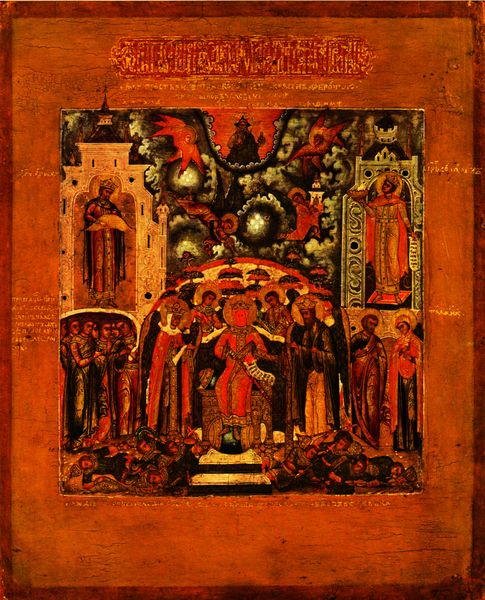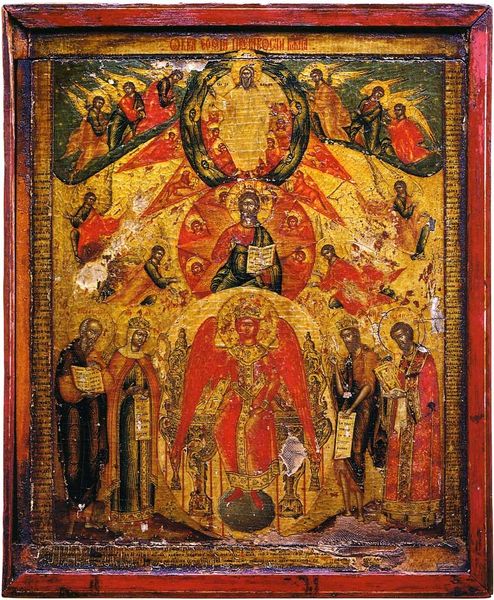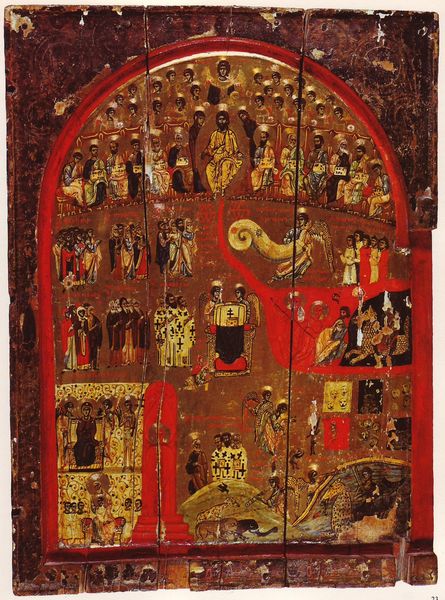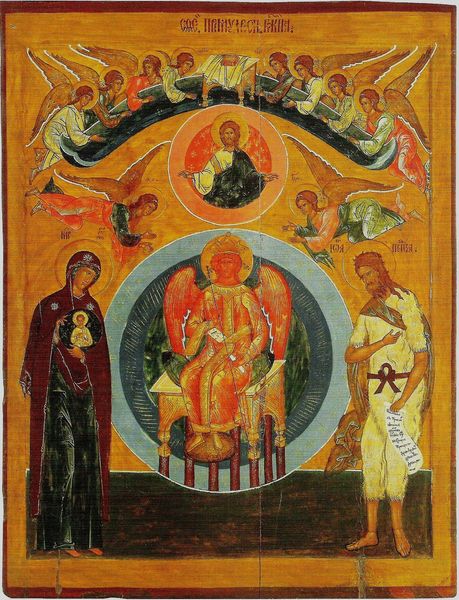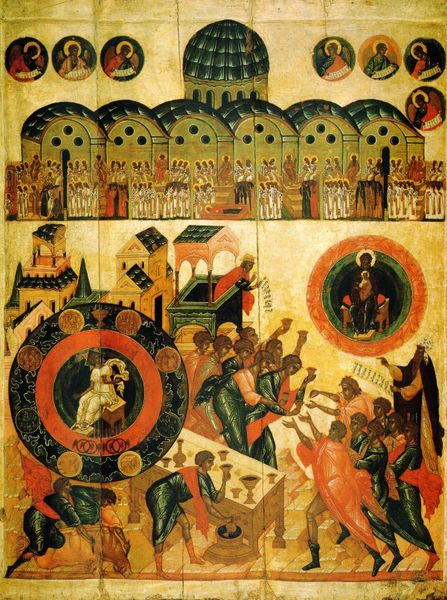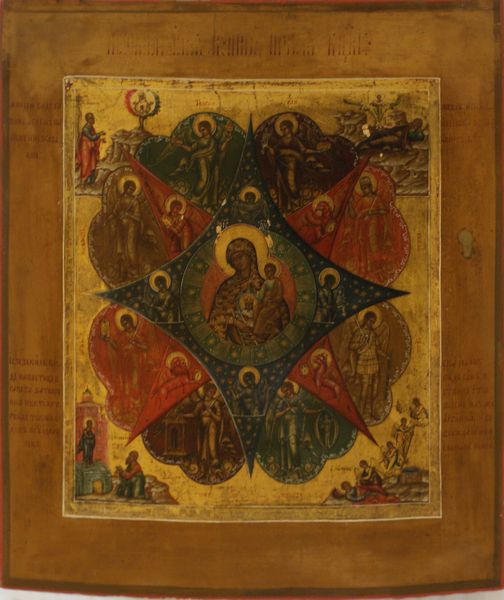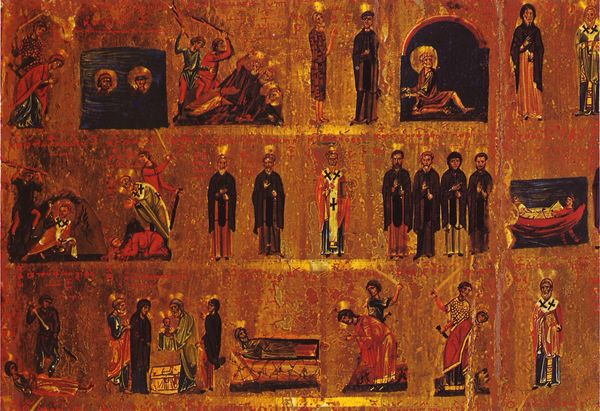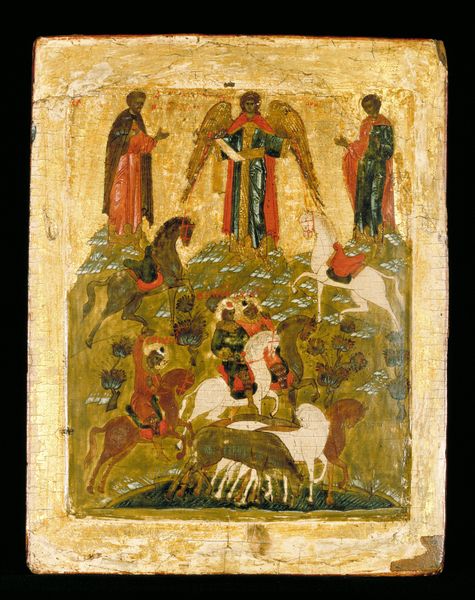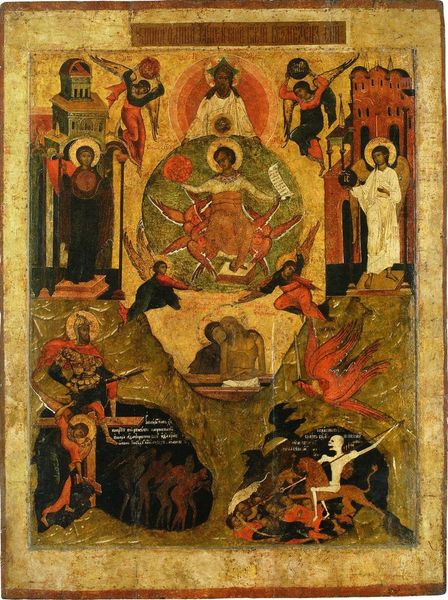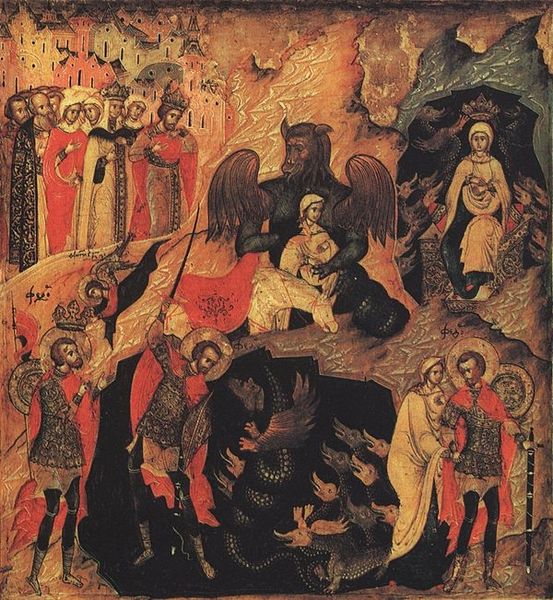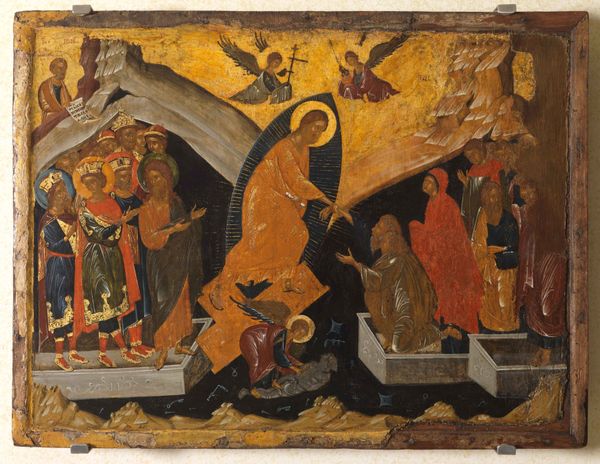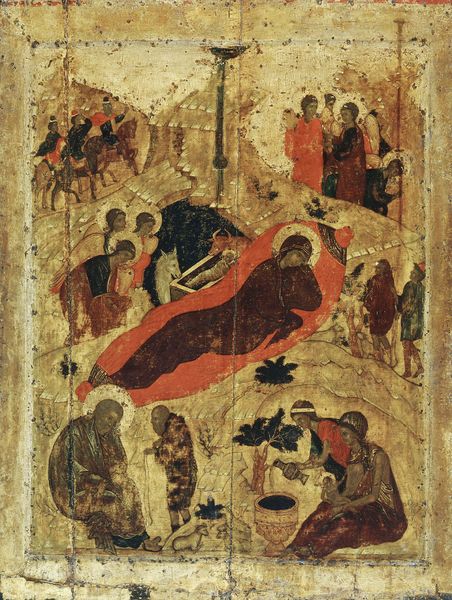
tempera, painting
#
byzantine-art
#
medieval
#
narrative-art
#
tempera
#
painting
#
figuration
#
naive art
#
painting art
#
history-painting
#
mixed media
#
miniature
Copyright: Orthodox Icons,Fair Use
Curator: Ah, this is "Wisdom Hath Builded Her House," a tempera painting created around 1750. It's just shimmering with devotion. Editor: It looks like it. There's something very direct, unadorned about it, despite all the activity crammed into the panels. It’s a lot of figures on what looks like maybe, a wood panel? I wonder about the process. Curator: Well, the tempera gives it that characteristic matte finish, doesn't it? I find it really pulls me in, the artist’s focus on faith creates such intimacy, each carefully placed figure has symbolic weight. Editor: Intimacy in such a densely populated image. The repetitive robes, the lined faces – it speaks of production and community and something larger than the individual hand, don't you think? How was this panel prepped and who prepared it? The cost? Was it local materials or imported pigments? I love how even these religious depictions are essentially labor encapsulated. Curator: I think that interpretation misses the feeling here – but I see your point, a devotional object produced, circulated, used within a specific context is such a tangible reminder of human presence. Each mark imbued with devotion or purpose! Look at the central Christ figure surrounded by all of his followers, he seems so pensive as he surveys it all. Editor: Pensive yes. But also so very formal and symmetrical – these are designed to be mass-produced aren't they? Perhaps each unique, sure, but how were they retailed and consumed by the public? This is such a good reminder of how icons had the ability to be mass-produced to spread ideologies and build markets! Curator: Right, or perhaps it reflects an era where artists, driven by genuine faith, used their talents to make spiritual concepts palpable for the masses, allowing divine understanding to resonate profoundly and be accessible. Editor: Indeed. An era where production itself held spiritual significance, and where repetitive gestures built up a sort of devotional practice for the craftsman himself. It certainly has an earthy appeal that persists. Curator: I agree. The blending of the earthy and the ethereal. A true representation of humanity striving towards transcendence. Editor: Absolutely, an art, or a set of practices, that speaks volumes of their moment in history—down to the grains of pigment in their composition.
Comments
No comments
Be the first to comment and join the conversation on the ultimate creative platform.
